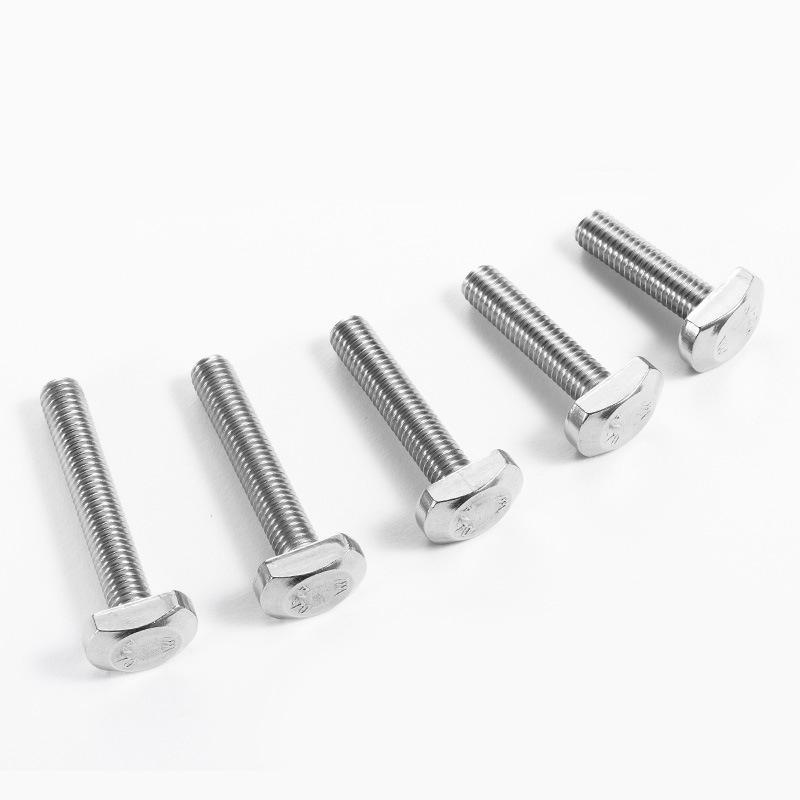

Exploring the Features and Applications of M8 Stud Bolts in Various Industries Today
Авг . 07, 2024 05:30 Back to list
Exploring the Features and Applications of M8 Stud Bolts in Various Industries Today
Understanding the M8 Stud Bolt A Key Component in Engineering
When it comes to fastening technology, the M8 stud bolt stands out as a vital component used across various engineering applications. This article aims to elucidate the intricacies of the M8 stud bolt, its specifications, applications, and significance in the realm of mechanical engineering.
What is an M8 Stud Bolt?
The designation M8 indicates a metric thread size of 8 millimeters in diameter. A stud bolt is essentially a type of fastener that consists of a long rod with threads on both ends, allowing it to connect two components securely. Unlike standard bolts that have a head on one end, a stud bolt is designed for installation in applications where a head is unnecessary or where space constraints exist. The threaded ends allow for the attachment of nuts on either side, enabling a strong connection.
Specifications of M8 Stud Bolts
M8 stud bolts are commonly manufactured in various lengths, materials, and finishes, catering to a wide array of environments and applications. They are often made from materials like carbon steel, stainless steel, or alloy steel, with standard finishes including zinc plating, galvanization, or passivation to enhance corrosion resistance. The most commonly used grades for M8 stud bolts are Grade 8.8, 10.9, and 12.9, which signify different tensile strengths and yield stresses, ensuring that the bolts can withstand substantial loads.
The typical dimensions of an M8 stud bolt include an 8mm diameter and varying lengths from 20mm to over 100mm, depending on the specific needs of the application. When selecting an M8 stud bolt, engineers must consider the tensile strength, allowable load, and compatibility with the materials being joined.
Applications of M8 Stud Bolts
stud bolt m8

M8 stud bolts have a multitude of applications across different sectors, including automotive, construction, marine, and machinery. In the automotive industry, for instance, they are frequently employed to connect engine components, exhaust systems, and various chassis parts. Their high strength and durability make them suitable for high-stress environments where vibration and impact are prevalent.
In construction, M8 stud bolts are utilized to secure structural elements, ensuring stability and safety in buildings and bridges. Their ability to be installed in tight spaces makes them ideal for situations where conventional bolts would be impractical. In marine applications, stainless steel M8 stud bolts are often used due to their corrosion resistance properties, ensuring longevity even in harsh environments.
Importance of Quality and Standards
The performance of an M8 stud bolt is heavily influenced by its quality and adherence to international standards. Manufacturers often comply with standards such as ISO, ASTM, and DIN, which dictate the materials, dimensions, and mechanical properties of fasteners. Using high-quality M8 stud bolts ensures reliability and safety in critical applications, preventing catastrophic failures that can arise from inferior components.
Moreover, regular inspection and testing of stud bolts are essential in maintaining the integrity of connected structures. Techniques such as torque testing and ultrasonic inspections are commonly employed to assess the condition of the bolts, ensuring they meet the required performance criteria.
Conclusion
In conclusion, the M8 stud bolt is a fundamental element in various engineering applications, known for its versatility and strength. Understanding its specifications, applications, and the importance of quality control allows engineers and technicians to make informed decisions when selecting fasteners for critical projects. As technology and industry standards continue to evolve, the role of stud bolts, including the M8 variant, will remain pivotal in the pursuit of safe and efficient engineering solutions.
Latest news
-
Premium Fasteners Manufacturer | AI-Driven Solutions
NewsAug.01,2025
-
Hot Dip Galvanized Bolts - Hebei Longze | High Strength, Corrosion Resistance
NewsAug.01,2025
-
High-Strength Hot Dip Galvanized Bolts - LongZe | Corrosion Resistance, Custom Sizes
NewsAug.01,2025
-
Best Self Tapping Screws for Drywall - Fast & Secure Installation
NewsJul.31,2025
-
High-Strength Hot Dip Galvanized Bolts-Hebei Longze|Corrosion Resistance&Customization
NewsJul.31,2025
-
Hot Dip Galvanized Bolts-Hebei Longze Metal Products|Corrosion Resistance&High Strength
NewsJul.31,2025

